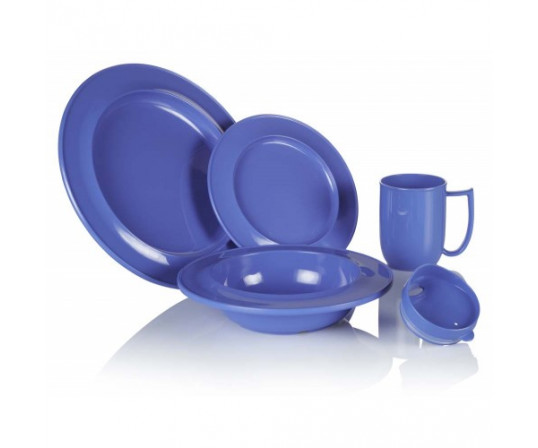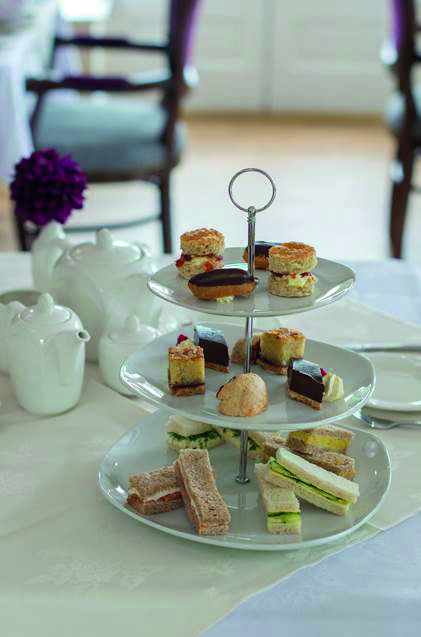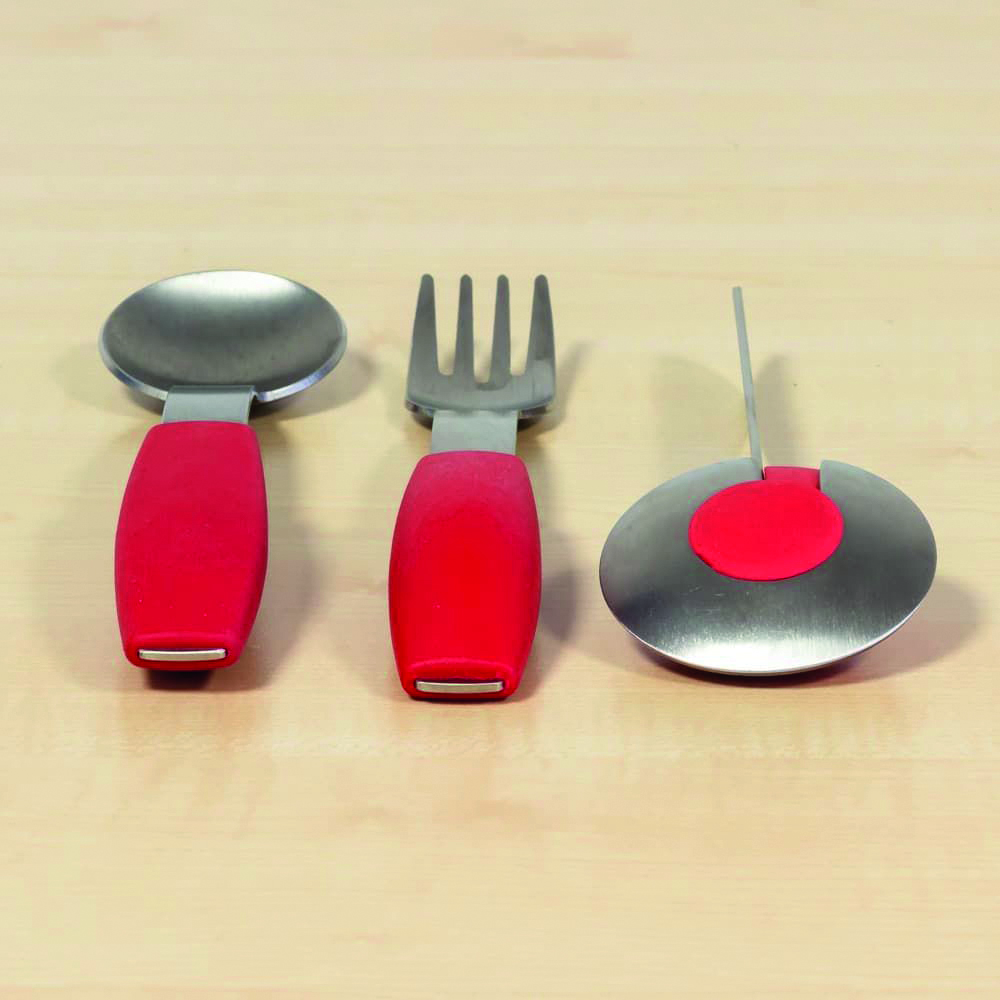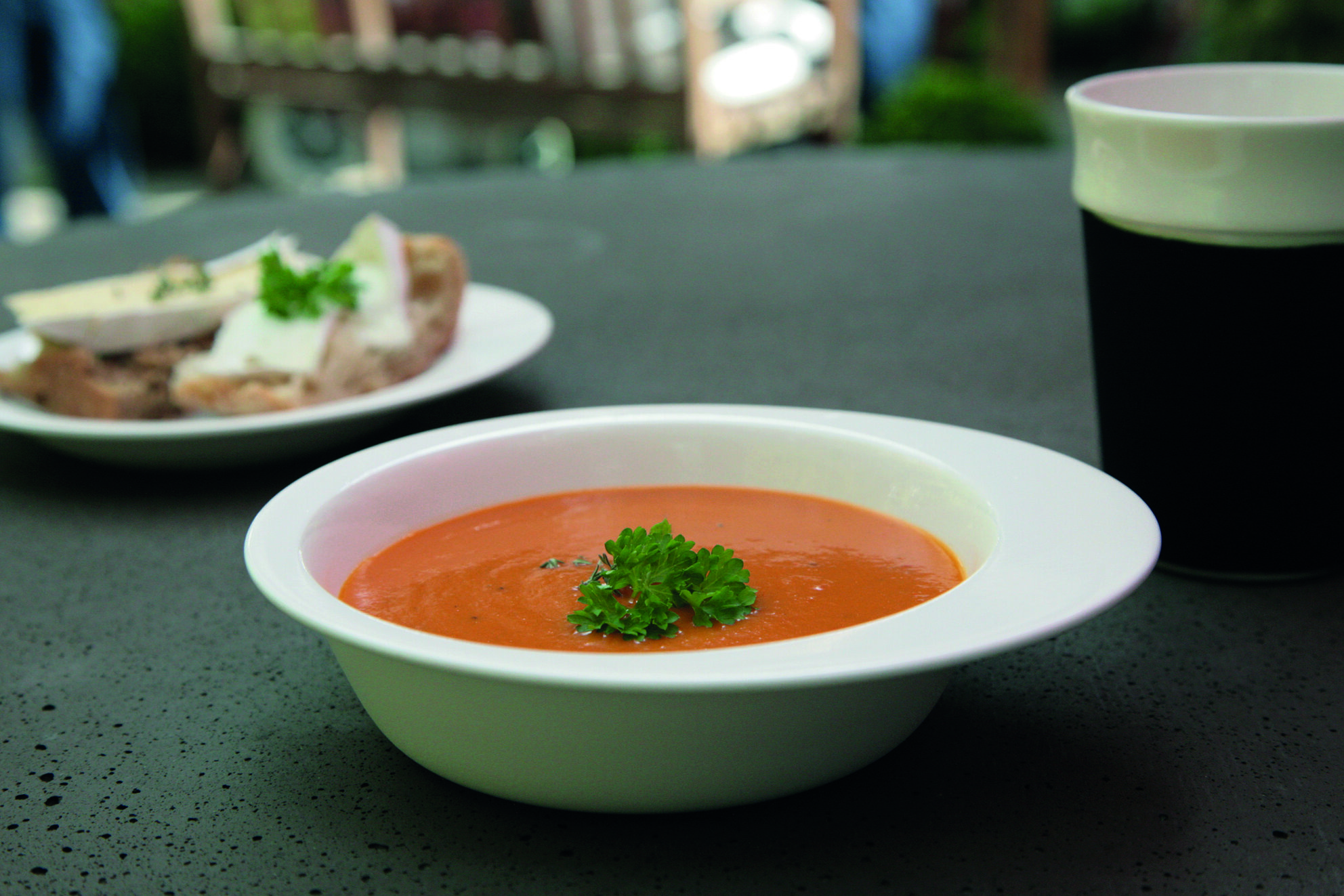
We explore why the design of dining rooms and the products used in them is crucial to supporting people living with dementia
Over recent years mhdf has explored best practise in the design of dementia care environments, recognising the role physical spaces have on empowering, or indeed obstructing, the lives of those living with the condition. But, with the focus for many architects and interior designers on private spaces such as bedrooms and bathrooms, one area often overlooked is the dining room. People with dementia can take longer to eat, have trouble with co-ordination, and in some cases have difficulty swallowing. Some may also need one-to-one support or cues to help them eat. And, with staff-to-patient ratios in many care homes at an all-time low, mealtimes are one of the moststressful and demanding parts of the daily routine. So, how can good design help?
BEST PRACTICE
Over the past two years Bupa has worked closely with Gregor Timlin and Nic Rysenbry, product designers from the Helen Hamlyn Centre at the Royal College of Art, to look afresh at some key issues of dementia design – and one of these is the dining room. Their findings are revealed in the 66-page Design for Dementia guidance, which provides a set of standards for future developments. The report states: “The big challenge when designing dining areas is to create a comfortable and appealing atmosphere and avoid elements that either detract from a resident’s remaining ability, or make the environment feel institutional. “Three key ideas that dining areas should address are the ability to control stimuli, the need for accessible tables, and the use of good-quality lighting.”
CONTROLLING STIMULI
As people with dementia are often sensitive to excessive stimulation, it is important that dining areas are small and located in areas off the main corridor and other busy circulation spaces. Larger spaces can be broken up using movable room dividers at a height that allows people to look over them when standing. This also helps with staff observation. And sound-absorbent materials and soft furnishings can help to further reduce noise. But positive stimuli can also be important, so incorporating the kitchen into the dining area means smells will help to stimulate appetite. It is also vital to include clearly signposted toilet facilities within easy access of dining spaces.
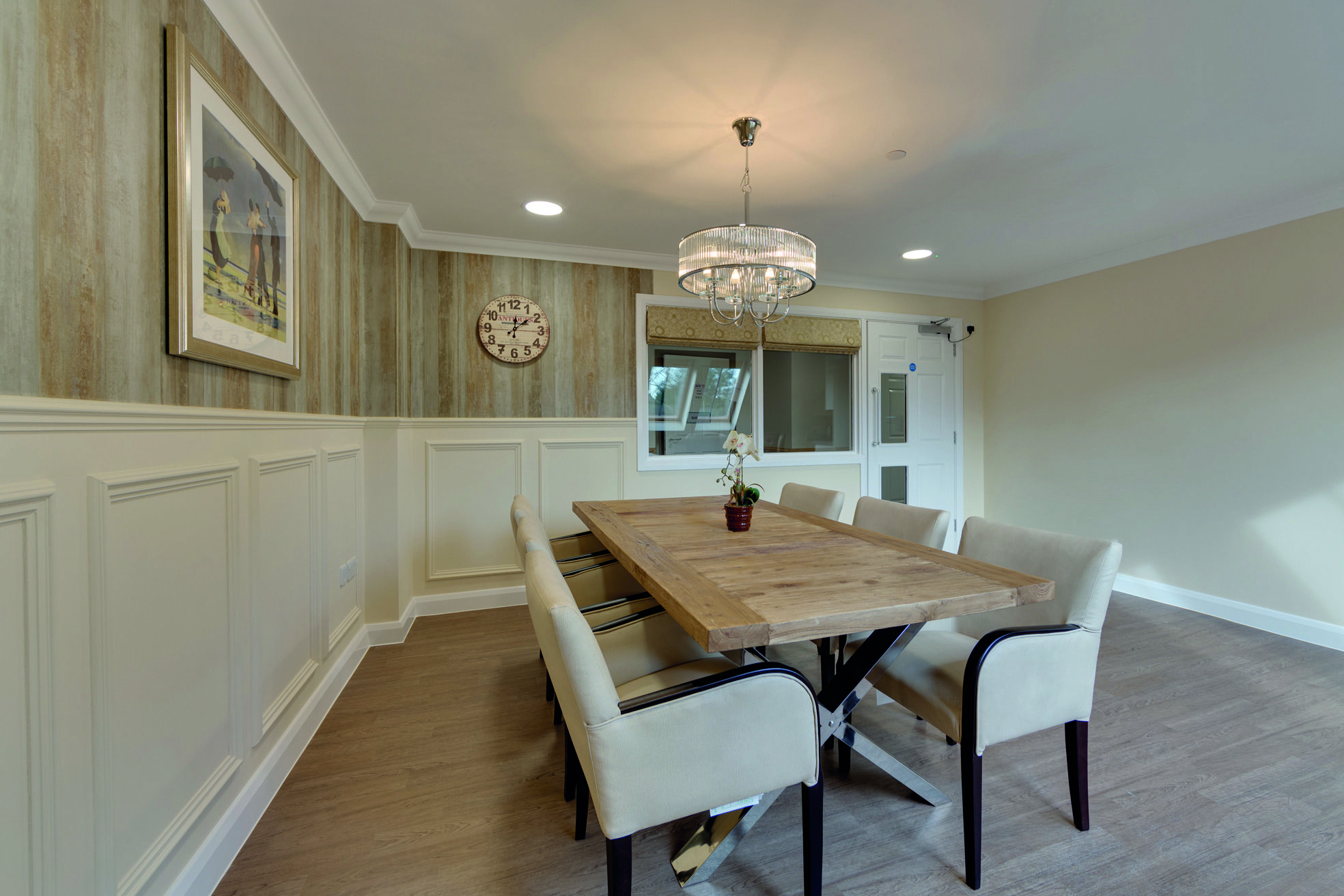
ARE YOU SITTING COMFORTABLY?
When it comes to furniture design, flexibility and functionality are key. The guide calls for a move away from low tables with central columns or support structures which prevent wheelchair arms from clearing the underside of the table, in favour of flat-bottomed tables, which can be used individually, or grouped together, giving a greater degree of flexibility to eat in smaller or larger groups. Table edges should also be rounded to limit impact damage or injury, and the surface colour should contrast to the edges to help those with poor vision. Chairs, too, must be carefully specified. In recent years, furniture manufacturer, Renray Healthcare, has seen a move towards a more fine-dining experience in dementia care homes, and the furniture choice reflects this, with walnuts and greys replacing the previously-favoured beech colours. And chair sizes, too, have changed, increasing from the standard 18ins height to 20ins to make it easier for people to get in and out of them. Rob Scovell, Renray spokesman, said: “One key way to help someone with dementia is to make their furniture and home feel more comfortable. This is because someone with dementia is going to spend a lot of time indoors. “Chairs should be comfortable and easy to get in and out of, with arms to assist with mobility, and, if they have slider, it makes it easier to push them over carpets.
AVOID PATTERNS
“Additional considerations include high chair backs to provide additional support, and padding to reduce the risk of pressure sores.” Renray has designed a range of furniture specifically tailored to dementia care environments and created in conjunction with people with dementia, their carers, and academics. Features include curved edges, easy-clean surfaces, the use of woodgrain- effect materials and patterns, and colour contrast, as well as ensuring comfort and overall durability.
LIGHTING UP
When considering lighting, good-quality luminaires are essential in all dementia care settings, but particularly in dining areas to ensure people can enjoy their meal. The guide states: “Important issues to be considered include lighting levels, glare, depth of perception, and flexibility.” With studies showing that older individuals can require three times as much light as younger people, using a powerful bulb and dimmer means that each table can be tuned to the needs of the people sitting at it. And in a mock-up dining room featured in the report, the lighting includes an acrylic diffuser to alleviate glare. The report advises: “It is important to be able to retract the light to the ceiling, or move it if the layout of the room changes. “The fitting [in the example] has a central cable that uses a hook and pulley system, allowing it to be temporarily moved for dining events or permanently moved by repositioning the hook.”
A BITE TO EAT
It’s not just the dining space and furniture that matters, though. Choice of tableware can also have an impact. The report advises: “A common strategy is to simplify the amount of utensils by providing just a plate and spoon with pureed or diced food that can be eaten without the need to be cut up by the resident. “This has proved to be very successful as it simplifies the process of eating, but still allows a person to feed themselves.” However, a key stumbling block is that, when using just one piece of cutlery, the diner ends up chasing the food around the plate. To address this, plates should have a high lip, and bowls should be designed so people can pick them up and drink from them, with an extended rim to enable them to be held in both hands. Even traditional care cups, which are similar to toddler cups, are being redesigned to better suit people with dementia. The report proposes a cup formed from a single piece of ceramic with a double skin and air-filled cavity between the inside and outside surface, reducing the risk of scalding. And the inner layer is sloped to reduce the amount of neck movement needed when drinking. Manufacturers are also offering crockery and cutlery in dementiafriendly colours, including yellow and blue. For example, Beaucare’s Melamine Dementia dignity dining crockery sets have been created after years of research and are designed for people struggling with mobility or sight. Made from long-lasting melamine, they keep food warmer for longer and the bright colours contrast with the food, making it easier to see. Find Memory Care has invested four years of research into its dementiafriendly crockery range, which features lipped rims, broad bases, and three colour choices; while Ornamin’s sets include single-handed cutlery designed for shaky or clammy hands and stiff fingers.
PICTURE THIS
Finally, to help further, signage and menu cards are important in any dining area. Caterplus recently launched a range of food cards designed to help people with dementia make informed food choices. Laura Tighe, managing director, said: “Historically, food cards have not represented food as it would appear on the plate, rather images have been snapshots of food choices – typically with neither plates nor cutlery in evidence. Such images are not easily recognised by dementia sufferers. "Our food cards take the concept to a new level. “Each card portrays a different meal choice, exactly how it would appear on a plate, and these are shown to people with dementia before mealtimes to help them decide what they would like to eat. “We’ve collaborated closely with care providers and residents to ensure the cards provide the best support by providing context and ease of use to streamline mealtimes.”
